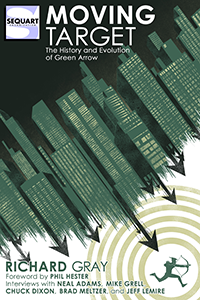Descender #13 is ostensibly about Captain Telsa, the red-haired, firey Captain from the UGC, sent to retrieve TIM-21 and the codex he carries in his electronic DNA that may hold the key to understanding the Harvesters that destroyed humanity. But after spending the bulk of the issue filling in the details of Telsa’s past, the issue pivots in the final moments to give us a further example of Dr. Quon’s duplicity and lack of nerve, illustrating just how far he will go to preserve his existence. We as an audience have always known that Telsa was valuable, and powerful, but Quon makes that clear to the robots that now hold this desperate team of refugees captive, saving him from Telsa’s savage beating. Dr. Quon is a character who demonstrates an heroic lack of ability to think long-term, from discovering the ancient robot codex to hiding from his fate after the fall of humanity, and right to the present moment, when he blurts out some essential information under duress.
The points made here about Quon — always seeking the quick and easy path, lacking the courage of his convictions — stand in contrast to Telsa’s arc, where she is portrayed as a determined and relentlessly driven solider, chafing under the charge of her father, desperate to get into the great galactic conflagration. While it is indeed charming to see Telsa as a spunky teenager, complete with pixie punk rock hair, this is entirely consistent with our understanding of the character. It almost seems redundant to show us where Telsa’s anger and cynicism comes from, because it’s such a familiar trope.
The connection between Telsa’s experience and the larger story revolves simply around the title of the comic: Descender. If we accept that it refers, at least in part, to ancestors and descent, then understanding where all the characters come from and how their heritage shapes their attitude becomes very important. The theme operates on a meta-level here: all the heroes (and most of the villains) are searching for the source of their power and the ultimate cause of their situation, namely the codex. Where it came from, how it gave the Harvesters their power and what it’s doing in the souls of TIM-21 (and his brother) is the maguffin around which the whole comic revolves. The fact that Quon straight-up stole it from an ancient alien and used it without knowing its true purpose just pushes those questions deeper into the background, evading easy dramatic answers. Quon’s revelation at the end of this issue (that the ancient alien robot is still alive) is on-point for both his personal fall from grace and the larger fall registered by humanity. In that sense, knowing where Telsa comes from is as important as knowing where all the characters come from. But it is a tenuous connection to draw, thematically.
But however problematic Telsa’s story might be in dramatic terms, it’s a great excuse to fill in some of the “space opera” details of this future universe. We meet Blugger, for example, before he became Andy’s Chewie, and Telsa visits a part of the galaxy that borrows heavily from both the Star Wars Cantina and Jabba’s palace. We also see some Ender’s Game-type training sessions and the backstory docks neatly with the present moment on the Machine Moon. Descender recently won an Eisner for Dustin Nguyen’s art, and the reasons why are certainly in evidence here, with some very interesting challenges such as the need for characters with limited facial movement to portray a wide range of emotions, or to effortlessly switch between the epic and the intimate.
The path is open for the mystery and magic of Descender to deepen and grow even more complex and interesting as the series moves forward, with rich characters and an even richer universe for them to inhabit.





















































